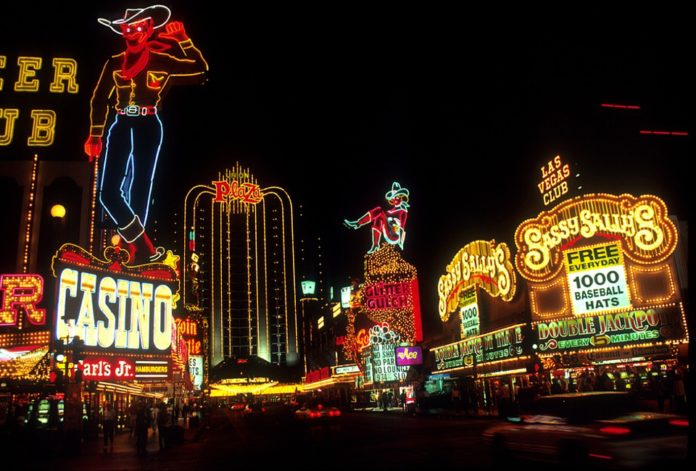GURJOT KANG; Reporter; kanggk@plu.edu
Once again, innocent civilians are left to pick up the broken pieces of their lives and put them back together after the tragedy of another mass shooting. On Sunday, Oct. 1, 64-year-old Stephen Paddock opened fire from the 32nd floor of the Mandalay Bay Resort and Casino at a crowd attending the country music Route 91 Harvest Festival in Las Vegas, Nevada.
Officials believe he acted alone to execute one of the largest mass shootings in U.S. history, in which he killed around 58 people and injured 489 more. Paddock subsequently took his own life. As of now, investigators are looking for potential leads and connections to attach a clear motive to the upsetting trail of destruction Paddock has left behind.
In the wake of this devastating attack, many issues have come to light, including new controversies surrounding gun control on bump stocks and automatic weapons. After further investigation, information was released that twelve of the weapons found in Paddock’s suite included bump stocks: attachments that allow semi-automatic rifles to shoot quicker rounds in comparison to that of a machine gun.
As of now, the attachments that allow these semiautomatic weapons to come closer to the standard of fully automatics are legal under federal law. In the aftermath of Paddock’s shooting—where he used bump stocks to carry out mass destruction on innocent festival-goers—many congresspeople have come out with bipartisan support for stricter regulations on these attachments.
According to The New York Times, the National Rifle Association (NRA) issued a statement that, “The NRA believes that devices designed to allow semi-automatic rifles to function like fully-automatic rifles should be subject to additional regulations.”
Debates on whether devices like bump stocks should be banned completely remain intense. Given the fact that Paddock was able to purchase 33 weapons in the last year without warning to the Federal Bureau of Alcohol, Tobacco, Firearms and Explosives (much of the reason being that there is no present legislation forcing sellers to notify the bureau of the purchase of various rifles by a customer) goes to show our increasing need for stricter gun control laws.
Another controversy that has come from the Las Vegas attack is the use of the term terrorism when referring to such a large act of violence against civilians. Many have argued that, given the perpetrator’s racial status as a white man, authorities have been quick to ignore labeling the attack as an act of terrorism.
In relation to this, Sheriff Joe Lombardo from Clark County stated that “We believe it was a local individual. He resides here locally… We don’t know what his belief system was at this time.” Statements like these show the privileges accorded to many white shooters through media coverage that avoids naming these horrific attacks as domestic terrorism.
A similar case where the media was quick to avoid naming an attack as domestic terrorism was with the Charlottesville white supremacist riots that led to the death of 32 year old Heather Heyer after a young white nationalist man drove into a crowd of anti-hate protesters.
The troubling problems associated with the media, authorities and public officials not referring to such acts as terrorism can be best described by a tweet The Washington Post shared from Jamelle Bouie, a political correspondent at Slate Magazine. She declared the fact “that Las Vegas authorities have ruled out terrorism at this early stage is another example of how the idea has all but been racialized.”
Some civilians have been angered by a recent focus on the need to call tragedies like the Las Vegas shooting an act of domestic terrorism, but I’m here to explain why it is so important and urgent for us to do so.
Since 9/11, Muslim-Americans and brown communities everywhere have been targets of hate crimes all across the U.S. After every act of terrorism projected across media platforms, many of these communities live in fear of becoming victims of violence and hate in their own neighborhoods.
As a young Indian-American woman from a Sikh background, I have seen my father racially stereotyped as a “terrorist” in the past because of his choice to wear a turban and grow a long beard in accordance to his faith. The negative implications of such stereotyping became even more vividly clear to me in eighth grade when my dad and I were driving back from Sunday school and I remember the frustration that flooded me when a young man on the road called my dad “Osama.” Or the anger I felt when my dad told our family of an instance when he was looking at an open house, but the white woman selling the house told him she didn’t want him there because she was afraid of the way he looked. Through conversations I have had with friends of similar backgrounds, I came to know that their families also experienced similar forms of racism.
The media’s specific perception of “what a terrorist looks like” has influenced society to develop a stereotypical image associated with terrorism that targets Muslim, Sikh and many other brown communities.
This can be shown through the 2012 Oak Creek shooting at the Sikh Temple in Wisconsin where the gunman killed six temple goers, or when a Sikh man was shot in his driveway earlier this year in Kent, Washington after being yelled at to “go back to your country.”
These horrific incidents of racism are exactly why we should stress for the attacks in Las Vegas and Charlottesville that were both carried out by white males to be addressed as acts of terrorism in order to dismantle this stereotypical media image of a terrorist.




















